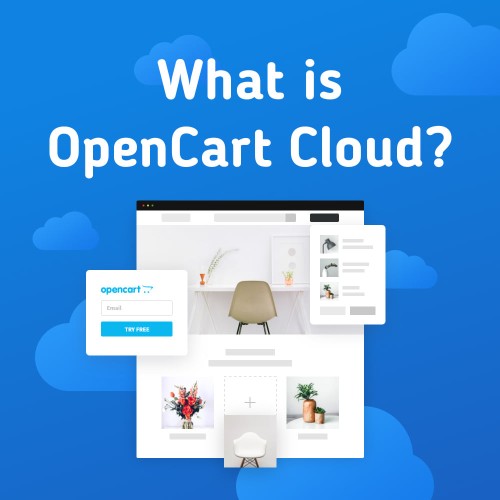The global e-commerce market is growing exponentially yearly and is expected to reach USD 6.3 trillion in 2023. This growth has moved beyond the traditional buying model from a virtual storefront into a broader market where consumers buy from other consumers in peer-to-peer marketplaces like Etsy.
Over the past five years, there has been a revolution in how e-commerce is run. Store owners are moving away from selling on platforms such as Amazon and eBay to having their online shops.
There are many reasons behind this – more control over pricing, brand, and a direct relationship with your customers.
Many have heard of Amazon and eBay, the two giants that have revolutionized e-commerce since its creation. Today's e-commerce owners and buyers are spoiled for choice with niche marketplaces like Etsy, Tictail, Wish.com, and many others.
There exist around 1000 marketplaces in more than 20 product categories.
The Revolution of E-commerce
According to statistical analysis by Statista, online retail will account for 20.8% of total global retail sales in 2023.
This means that online shopping will be the next big thing in the retail industry, which is already in upheaval due to technological advancements and changing consumer behaviors.
The evolution of e-commerce platforms has been phenomenal over the years. Platforms like Shopify and Magento have revolutionized how businesses operate by making it easier to build an online store, manage inventory and create marketing campaigns.
However, these platforms are not limited to just managing your business operations; they also provide many other services, such as analytics tools, customer support services, and more.
Here are some significant changes:
Consumers have become more sophisticated. They know precisely what they and they will not settle for anything less. This has resulted in the growth of niche e-commerce stores that cater to specific needs.
Online shopping has become increasingly socialized. Customers no longer want to buy products; they also want to share their experiences. Therefore, social media has become an integral part of every e-commerce platform, allowing customers to share their experiences with other shoppers through reviews and comments on social media platforms.
Technology has made it easier for people worldwide to communicate instantly with each other. This means there are no geographical boundaries — if something catches your eye while shopping on Amazon or eBay from your home PC.
Developing New Customer Insights
The changing e-commerce landscape has created a need for new customer insights to help businesses make better decisions about how they interact with their customers.
Customer data isn't just something that can be used for marketing purposes. It can also inform decision-making at every stage of the customer lifecycle, from acquisition to retention.
Here is an example of how new customer insights can be used.
Acquisition
The acquisition is the first step in any relationship with a new customer.
Once someone visits your site or makes a purchase, there's a lot you can learn about what made them do so and what will keep them coming back for more. This includes everything from where they came from (search engine optimization, paid ads) to what information influenced their decision (product reviews, pricing). Sometimes creative product packaging design can also be the reason how you can acquire good loyal customers.
It also includes which emails got opened and whether they led to conversions or bounced back as undeliverable messages.
It's essential to keep up with changing trends and customer preferences. You can use data from web analytics and customer surveys to identify areas where your business needs improvement.
This may include improving how you interact with customers online or increasing product variety to meet their needs better.
Shifting to a Multi-Channel Approach
Today, consumers want a seamless experience when they shop online. They want to be able to search for products on one platform, compare prices and then purchase them from another site.
To provide this experience, retailers are shifting their strategy from a marketplace (where customers can shop on multiple sites) to a multi-channel approach (where retailers own all aspects of their business).
Retailers are increasingly offering omnichannel experiences, which necessitates good customer experience management. The online shopping experience has changed dramatically over the last few years.
Consumers now expect an omnichannel experience that includes mobile, desktop, and in-store purchases. They also want instant gratification and convenient delivery options.
One way to increase your reach is by expanding beyond your website and into other channels, such as social media and email marketing campaigns. By doing this, you can offer customers more options when it comes to buying from you, increasing brand awareness and sales potential across multiple platforms.
Focus on the Unboxing Experience
E-commerce is about to get even more user-friendly, innovative, and convenient. Below are specific proven strategies to unravel the experience of e-commerce platforms.
Understanding the Role of AI in E-Commerce Platforms
The first stage of AI adoption was using artificial intelligence to improve customer service.
This included using chatbots to answer simple questions, provide FAQs, or use machine learning algorithms to parse emails and find trends that might indicate a customer issue or question.
Next came personalization — using customer data (like their buying history) to make recommendations based on past behavior. Then came automation — using machines rather than humans to complete tasks like fulfillment or order processing.
Now we're seeing a new phase where AI can be used as an assistant for decision-making and strategic planning processes.
Personalized recommendations are widely prevalent. E-commerce platforms are now focused on ensuring customers have a personalized experience.
This can be done by showing them what other people who bought a similar product also bought or by suggesting products based on their previous browsing history.
Improving User Experience
The main aim of an e-commerce platform should be to provide users with an exceptional experience each time they visit your website or app store page.
This requires collecting data from different sources such as websites, social media accounts, online ads, etc., analyzing it, extracting insights from it, and using them to create a website layout design that resonates with the target audience. The website layout design should be visually appealing, easy to navigate, and optimized for different devices to ensure a seamless user experience. It's not just about the design, either. A recent Google survey estimated that a jump in a page's loading time from 1 to 3 seconds results in a 32% higher bounce probability. Often, the slow speeds are due to an unsuitable hosting service, so if you want to keep your e-commerce business going, you may want to look for a high-quality OpenCart hosting solution that is adapted to the platform and its requirements.
Offering AR/VR As a Service
With the advancement of technology, virtual reality (VR) has become more mainstream. Many people have started using VR headsets for gaming and entertainment purposes.
Now, online retailers are also using VR devices to offer an enhanced shopping experience to their customers. They offer VR as a service so users can try out products before buying them.
Some e-commerce platforms, such as Amazon, even let customers try out products without leaving their homes.
For example, if you want to try out a pair of sandals before purchasing them on Amazon, all you need to do is put on your VR headset and explore different footwear styles!
AR allows online retailers to create 3D models of products and place them in real-world settings using their phones or tablets. This is how they're merging the physical and digital worlds.
Adopting a Marketplace Strategy
It's easy to see the appeal to large online retailers for adopting a marketplace strategy. Marketplaces act as central hubs where buyers and sellers can come together, fostering transactions that may never have occurred without such a site.
Marketplaces are becoming increasingly popular among online retailers, which is excellent news for small business owners who hope to use eCommerce for their ventures.
Their growth also allows large companies to adopt strategies for the marketplace model.
Conclusion
Ultimately, the platform that you use will depend on what you're trying to accomplish with your e-commerce website.
Are you looking for an all-in-one solution with a high level of customization? Or are you just looking to get your general shopping cart website up and running as quickly as possible?
Once you've decided what you want from your e-commerce site, finding a platform like Opencart that can deliver shouldn't be too difficult.




Login and write down your comment.
Login my OpenCart Account